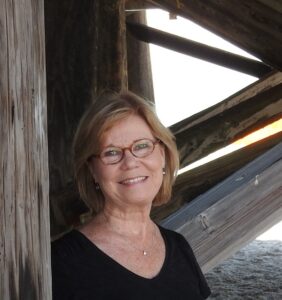 Greetings readers. In celebration of Undertow’s upcoming 7th birthday this November, here’s a peek into the story. Pass it on to anyone you think is interested. You can do that with all my blog posts. In fact, I’d love it if you did! 🙂
Greetings readers. In celebration of Undertow’s upcoming 7th birthday this November, here’s a peek into the story. Pass it on to anyone you think is interested. You can do that with all my blog posts. In fact, I’d love it if you did! 🙂
Extra bonus material like this will come to you until Nov. 1st. On that day, you’ll receive a post explaining how to get a FREE copy of the whole book, Undertow. I have only seven to give away. So, stay tuned.
This first chapter appeared on the blog in 2021, so at the end, you’ll see Comments from that time. Feel free to add your own!
Notice the first line: “If they find out, they’ll think I’m weird.” That fear continued to haunt me in many circumstances, year after year, until I published Undertow.
Chapter 1 – Hiding in Plain Sight
by Charlene L. Edge
If they find out, they’ll think I’m weird.
In the winter of 1987, my Sociology professor clutched a stub of white chalk, drew a pyramid spanning the height of the blackboard, and crowned it with an X. Thirty students, many half my age, surrounded me in a beige classroom. None of them knew my secret.
“Okay. Last week we discussed gender inequality in the workplace,” Dr. Schaffer said. “Tonight, we’ll examine autocratic groups and how they operate. My not-so-elegant drawing represents their hierarchical power structure. Religious ones are often called ‘sects,’ or ‘cults.’ By the way, I’m saying, s-e-c-t-s, not s-e-x.”
When laughs died down, she said, “The leader is X.” She underlined the X. “He or she dictates the group’s beliefs and behavior.” Dr. Schaffer straightened her red print scarf and examined our faces one by one. Students rearranged notebooks and clicked their pens. Tonight’s lecture was far from news to me, but I drew the pyramid anyway, mimicking other students, trying to fit in. Instead of X, though, I scribbled W for Dr. Victor Paul Wierwille, founder of The Way International, in its heyday one of the largest cults in America.
“Under X,” Dr. Schaffer said, “I’ll draw some little y’s and z’s to represent underlings. The y’s, right below X, report to X and oversee the z’s, who fill the pyramid’s lower regions.”
I was a y.
“The further down members are,” she said, “the less status, power, and knowledge they have.” She tapped the chalk on the z she’d drawn last. “This is the newest newbie.”
Seventeen years ago that z was me.
Across the aisle, a young woman copied the pyramid in her notebook, filling it with ghoulish cartoon figures. But it wasn’t funny. Each x, y, and z represented a real person. In that lecture at a branch of The Ohio State University in Lima, I straddled two irreconcilable existences: one in a fundamentalist cult destroying me, the other in a college resuscitating me. My current situation? Right there on Dr. Schaffer’s pyramid for all to see. The future? Nowhere in sight.
While safe in the warm classroom, I knew snow was amassing on Highway 75 and beyond that on Highway 29, which took me deeper into the countryside to home. I dreaded the dangerous return trip, but other things scared me more. The Way’s compound, riddled with paranoia, was close to my house and less than an hour from campus down Highway 29. I worked there. I’d discovered what Dr. Wierwille had done. I saw what leaders he trained were doing.
“These underlings,” our professor said, pointing to the y and z marks, “find something appealing about the group, like a sense of community where believers share the same values, a leader who claims special knowledge not found anywhere else, and promises of unique enlightenment or future rewards in the afterlife.”
Yup. Wierwille promised he’d teach us God’s true Word. Back then, I wanted that. I shielded my eyes, leaned over my notebook, and retraced the W, digging my pen harder into the paper, monitoring my body language, avoiding any telltale move that might reveal I understood this topic better than Dr. Schaffer.
“To retain members,” she explained, “the leader creates a sense of ‘us versus them’ to keep the group fighting a common enemy.”
The Devil. That was our enemy. He used unbelievers and anyone who warned us against Wierwille, even our families. Only three years earlier I would have considered this professor one of those adversaries. Not now.
The previous week, we’d met in her office to discuss homework, and before I realized it, I’d blurted out, “I’m working at The Way International.” That got her full attention. “But I’m trying to leave. I can’t—” Then I cried and told her everything.
“You know, I’ve not had anyone from there in my classes before.” Her oceanic tact put me at ease. “If you’d like, I’ll teach one night about groups like it; some call them cults.”
I wiped my tears, not knowing how to thank her enough. Her offer transformed her from authority figure to understanding guide. Her coal-dark hair, cut into a bob, reminded me of black-eyed Susans that grew wild along Ohio country roads. Spring would come again.
“Cults,” she continued, moving aside for us to see her pyramid, “seduce people to join in a variety of ways.” She scrawled the words love bombing on the board. “Recruits feel especially cared for during initial contact with the group. Members hug them. Make them feel they’re in one big happy family. For a time, maybe they are.”
I was eighteen when that happened, fresh from Young Life camp, sitting on a lounge pillow at The Way Inn Coffeehouse and listening to zealous Doug praise Wierwille’s Bible class. These days, Way members betray each other. Not far down the snowy road I would travel after class, confusion and suspicion were overrunning Way headquarters. Devious leaders vied for top positions and sent jolts of fear through the staff, causing untold anxiety attacks and rampant distrust about the organization.
“Progressive pressure is put on followers,” Dr. Schaffer said, pointing to the chart, “to deepen their involvement and make more and more sacrifices to fulfill the leader’s agenda.”
That is the truth, Professor. I twisted a strand of hair; her eyes met mine. She peered at students in the front row.
“Many people give up marriages, careers, education, trust funds, and other religions to be accepted into a cult making irresistible claims.”
I’d done that. I’d strained ties with my family, broken off with friends, rejected an adoring boyfriend, abandoned a promising university education, and left the faith of my youth, but not once did I consider any of that a sacrifice.
“Think about this,” she said. “A person’s ability to make independent decisions and engage in critical thinking can atrophy, making it hard to leave, even frightening.” She stood still, waiting as some students took more notes. Others leaned back, blinking in thought.
One student raised his hand. “I’ve heard about something like kidnapping. Parents hire people to take their kids from cults and un-brainwash them. It’s supposed to change them back into who they used to be. Does it work?”
“That’s called deprogramming,” Dr. Schaffer said. “It can work sometimes. But it really is a criminal offense. Very controversial.” She patted her hands together, sending chalk dust puffing through the air. “I don’t think genuine change can happen through coercion, but some say it can. Some deprogrammers have been prosecuted, gone to jail. So remember that. A vital aspect of this issue, of course, is that cult believers have freedom of religion in America—just like anyone in a well-known church. This topic is complex.”
No more hands went up.
“Loyalty,” she said, “is the primary quality valued in a follower, you can be sure of that.”
Yes. But now, as a traitor, can I escape before they find out? Before I’m thrown to the curb, penniless, like my friend John?
“Many people, even students like you,” she said, not looking at me, “like to feel certain about God and spiritual matters. Cults offer certainty. That, you can count on.”
On the drive home, nudging my car through the snowstorm, I leapt from one memory to another, ashamed that I allowed myself to get sucked into The Way, and that Wierwille used me to spread his propaganda. Dr. Schaffer, an unexpected humanitarian, held me steady for the moment, but I feared for my mental health, even my physical well-being. I’d discovered The Way’s underbelly, bloody-black and swollen with greed, and nothing could make me stay. In the beginning, I only wanted to know, love, and serve God and understand the Bible. What harm could that possibly bring?
—END—
This first chapter is available for PDF download on this page of my website: Undertow: My Escape from the Fundamentalism and Cult Control of The Way International | Charlene L. Edge (charleneedge.com)
Next blog post – October 21 – Making Waves with Undertow: Why I Wrote the Book
Thanks for reading!
Your writer on the wing,
Charlene








Peg
I admire your courage.
Kathleen Brandt
I read Undertow for the first time only this past year. I was drawn in instantly and read it practically straight through. A must-read for anyone interested in cults and cult-like thinking — which should be all of us, these days.